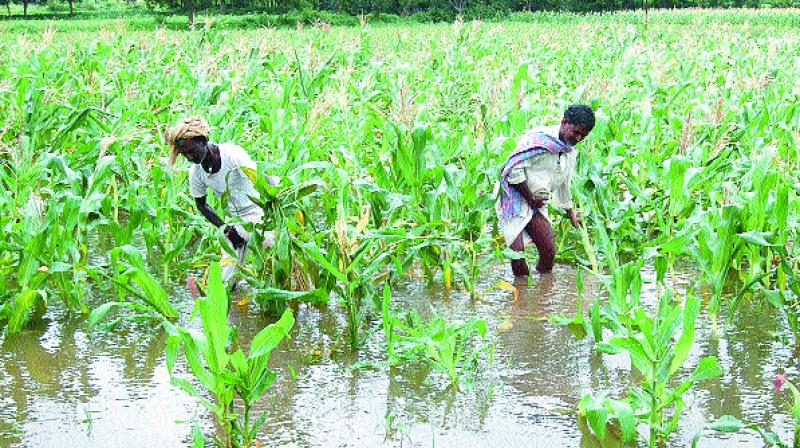Poor Land Records Might Sabotage Modi’s Assured Farm Income Scheme

New Delhi: The ambitious Pradhan Mantri Kisan Samman Nidhi scheme, which proposes income support of Rs 6000 annually would have to overcome inherent challenges to reach out to the targetted beneficiaries, Ila Patnaik, Professor at the National Institute of Public Finance and Policy has said.
The scheme is targetted at farmers who owes two acres of land and less. But lack of computerised land records that are linked to bank accounts could pose an upheaval task for the government to make the scheme a success, she said in her article in news portal The Print. The Government has promised that the first instalment of Rs 2000 will be deposited before the ensuing elections.
“The challenge can be illustrated with a simple example – in a family where three sons and three daughters have inherited their father’s land after his death, and the land records have not been updated, in whose bank account will the amount be credited?,” she highlighted.
Land not measured correctly:
A small study by the National Institute of Public Finance and Policy (NIPFP) of two tehsils (100 parcels) in Rajasthan found significant errors and discrepancies in the maintenance of land records. In 24 per cent of the cases, the difference between the area on record and the area measured was more than 20 per cent. Errors like these contribute to the problem of determining eligible farmers.
Owners not identified:
Farmlands in India are usually jointly owned by several members in a family, but not all of them could be actively engaged in tilling. Since possession records are not updated, the government would have to assign the annual Rs 6,000 to one of the multiple owners or distribute it evenly among all the owners.
Incomplete computerisation:
A report on Digital India Land Records Modernisation Programme (DILRMP) released in September 2018 found that while 87 per cent of the villages have computerised the records, transfer of ownership records have been computerised in only 50 per cent of the villages. Moreover, only 20 per cent of the villages had computerised the record-of-rights, which records possession.
May compound land title problems:
Since such records are poor and the title is largely presumptive, most ownership is proved through indirect methods.For example, any person who has been paying property tax for years is presumed to be the owner of that property.
Similarly, electricity bills, irrigation fees, and other indirect methods are used to prove ownership, in the absence of proper records of the title. In such a situation, the subsidy payment may also become one more presumptive evidence of ownership.
The Way Ahead:
The first step required is verifying ownership documents at the village level. Second, these records need to be checked by revenue staff and change of ownership has to be recorded. Disputed cases have to be identified for early resolution through revenue courts. These then need to be computerised.

Comments are closed.